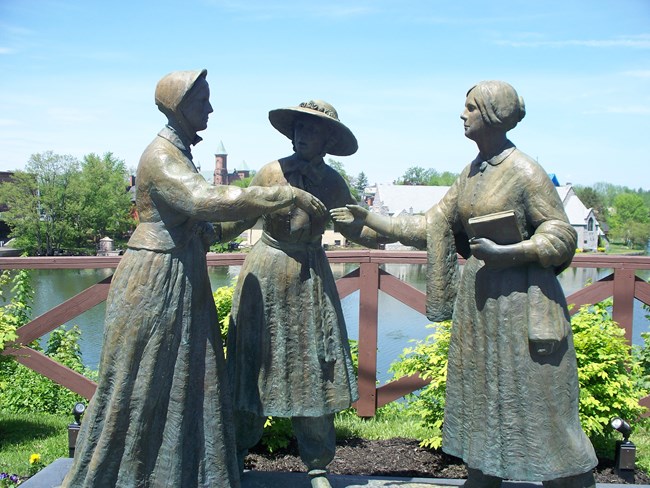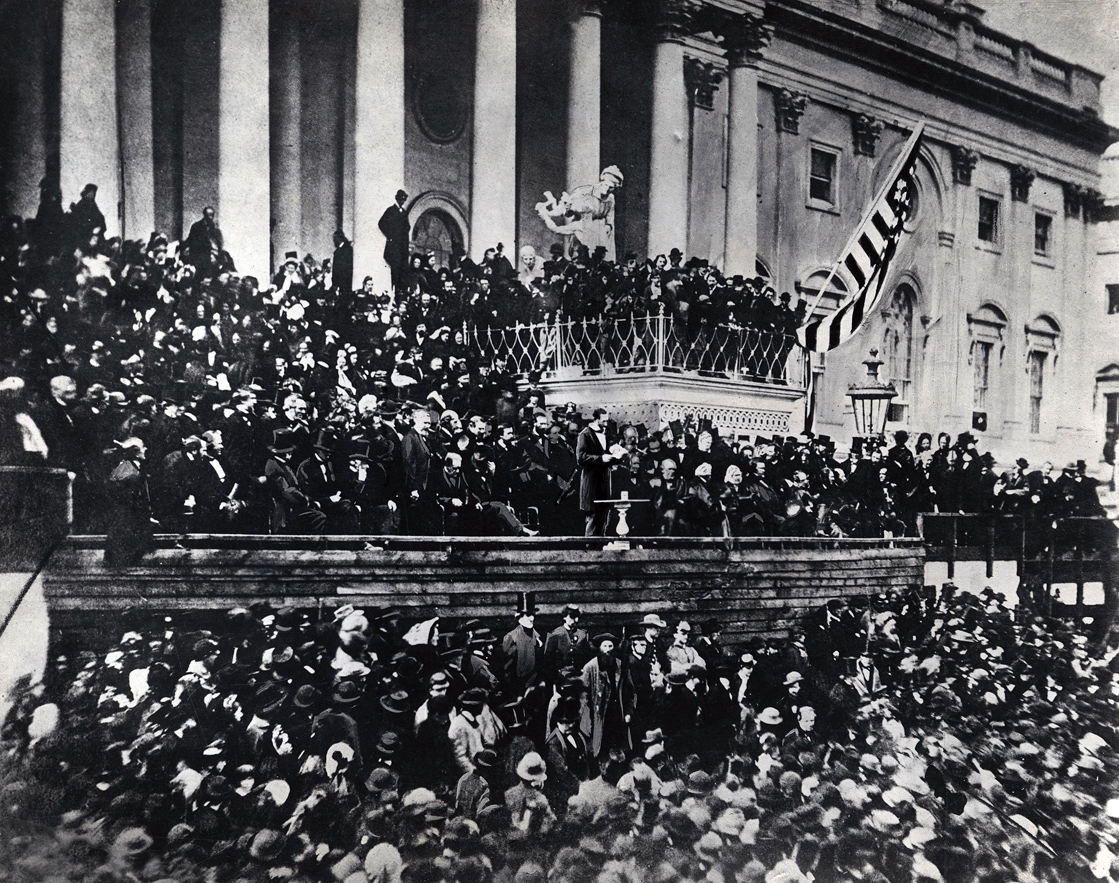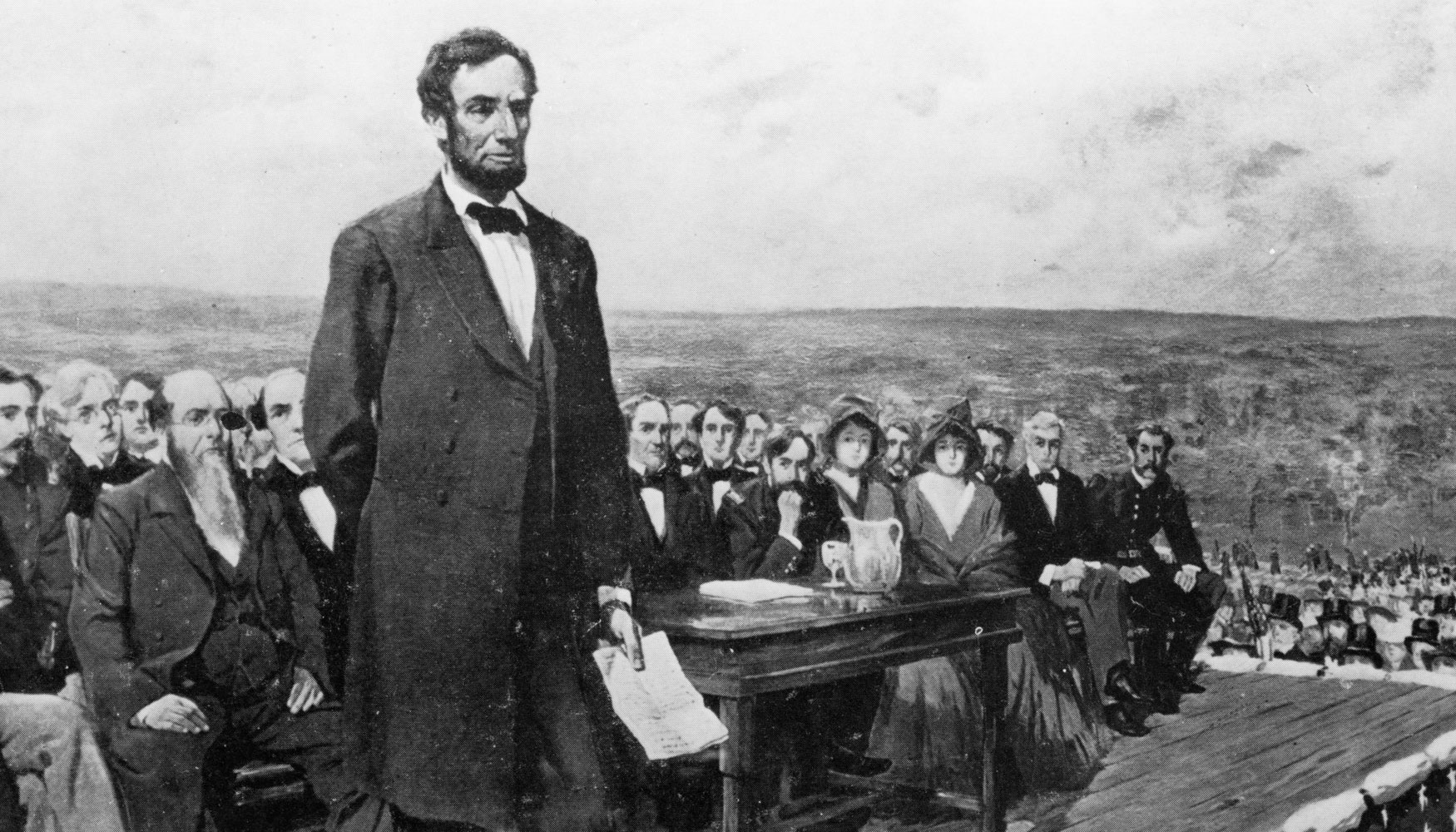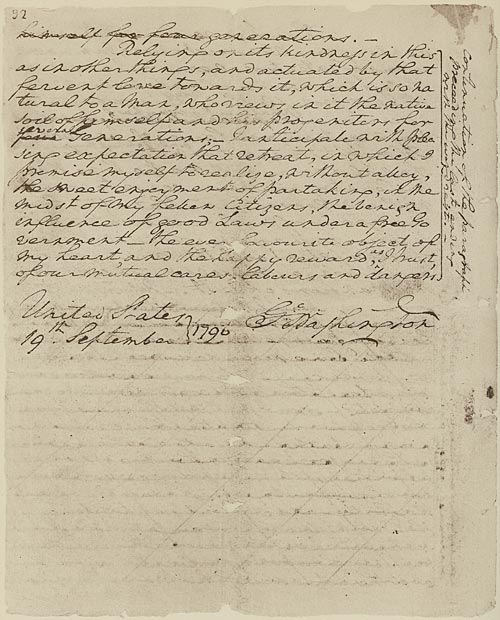 |
Attendees of Seneca Falls Convention
in Women's Rights National Historical Park
|
The Seneca Falls Declaration of Sentiments resembles the Declaration of Independence, as it lists grievances the king decided to ignore and withhold. The democratic principles listed in the beginning are all men and women are created, they are entitled to certain inalienable rights, those being life, liberty, and the pursuit of happiness. Also that they have the right to overthrow a government the citizens no longer deemed prudent and safe for their rights. Women brought up the point that they should be able to have a say in what laws were being passed because they were subject to them, just like anyone else. Also, men have taken any earnings women may have earned, telling them that they should stay home and take care of the house and children. Furthermore, colleges were closing their doors to women, destroying any opportunity of them getting a decent education. Plus, men forced women to be subservient and obedient to them in marriage. Additionally, women were not allowed to divorce their husband, unless he agreed. They could not leave, even if the husband was abusive. Five notable names that signed were Lucretia Mott, Elizabeth Cady Stanton, Harriet Cady Stanton, Frederick Douglass, and Edward F. Underhill. The woman who did not sign was Susan B. Anthony, which is strange, as she was a huge supporter of women's rights.
 |
Declaration of Independence also listed specific
problems the colonists had with their rights
being suppressed by King George III. It also
listed the democratic ideals shown in the
Seneca Falls Declaration of Sentiments.
|



















